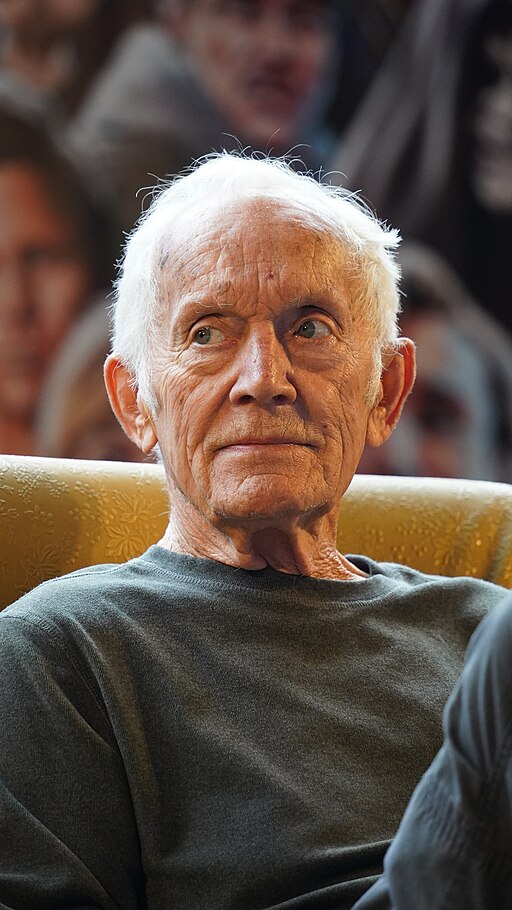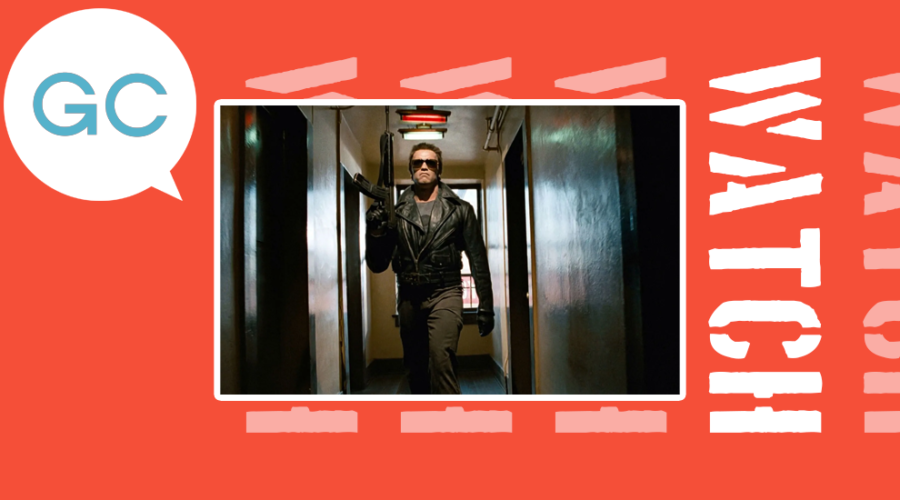1984 was an extraordinary year for adventure, fantasy and action films. Titles such as Amadeus, Ghostbusters, Nightmare on Elm Street, Beverly Hills Cop, The Neverending Story, Indiana Jones and the Temple of Doom, The Karate Kid, and Terminator intoxicated fans of the Seventh Art and made an impact on the industry and pop culture that can still be seen today.
The Terminator, on the other hand, was a low-budget production that took audiences by surprise and revolutionized the science-fiction genre forever.
Directed by Canadian James Cameron, and co-written by Cameron, Gale Anne Hurd and William Wisher Jr, The Terminator explores the possibility of artificial intelligence turning against humanity. Based on the premise of “the rebellion of the machines,” The Terminator is the story of a killing machine sent back in time to hunt down a woman who will play an important role in a future war.
At the time, The Terminator grossed over $75 million worldwide on a budget of $6.4 million and it marked the beginning of many, many things. It marked the beginning of an indelible, huge and beloved franchise, propelled James Cameron’s career as a blockbuster director, promoted Arnold Schwarzenegger to stardom, and gave rise to “tech noir” as a film sub-genre, among other achievements.
The Terminator’s iconic line “I’ll Be Back” certainly proved prophetic. Indeed, the story came back over the decades, and still resonates strongly with audiences.
To celebrate the 40th anniversary of one of the most iconic sci-fi feature films in modern history, we’ve compiled the most unexpected tidbits, here are some facts you may not know about The Terminator and its filmmaking team.
#1: James Cameron dreamed up The Terminator while he was sick
James Cameron has said that he conceived the idea for the film during a fever dream.
In an interview with the British Film Institute, James Cameron explained that the inspiration for The Terminator came to him during an illness in Rome. Suffering from a fever and locked in a hotel, he had a nightmare in which he saw a cyborg crawling through flames.
“The Terminator came from a dream that I had while I was sick with a fever in a cheap pensione in Rome in 1981. It was the image of a chrome skeleton emerging from a fire,” he explained to the BFI.
As soon as he woke up, the aspiring director began sketching a concept drawing based on the dream.
“The first sketch I did showed a metal skeleton cut in half at the waist, crawling over a tile floor, using a large kitchen knife to pull itself forward while reaching out with the other hand. In a second drawing, the character is threatening a crawling woman,” said the director.
Little by little, these drawings developed into the film.
#2: Arnold Schwarzenegger was not the first candidate for the role
Let’s face it: one of the most memorable aspects of the film is the image of Arnold Schwarzenegger as The Terminator. However, as hard as it is to imagine anyone else in the role, James Cameron had something quite different in mind.

The director’s initial idea for The Terminator was for an anonymous figure who could blend into the crowd and go unnoticed. Cameron thought Lance Henriksen was the ideal candidate for the job.
The studios considered different options, ranging from O.J. Simpson to Sylvester Stallone to Michael Douglas, among others. Actors such as Mel Gibson and Tom Selleck turned down the role.
Arnold Schwarzenegger has explained that he originally wanted to play human resistance fighter Kyle Reese. At the time, the “Austrian Oak” was looking to build his career around heroic roles and consequently didn’t want to tarnish that image by playing an antagonist. It wasn’t until he read the film’s script, before his first meeting with James Cameron, that the actor changed his mind.
On more than one occasion, the Titanic director has commented that Schwarzenegger’s unique face and “brute force” image made him the perfect Terminator. One thing is for sure, the former bodybuilding champion managed to exceed expectations as the iconic T-800.
#3: James Cameron’s original ideas were different
1984’s The Terminator follows Kyle Reese, a member of the human resistance who travels back in time to fight Skynet’s killer cyborg. Broadly speaking, the film revolves around two time travelers, and is set between 1984 Los Angeles and the post-apocalyptic future of 2029.
The original idea, however, focused on four time travelers, two Terminators and two humans. In the first version of the story, Reese had a fighting partner, and Skynet sent another Terminator, one made of liquid metal. However, due to budgetary restrictions and the limitations of effects of the time, Cameron had to shelve those plans.
In 1991, the director decided to revisit the idea of a shape-shifting cyborg with Terminator 2: Judgment Day.
#4: James Cameron sold the script for a dollar
At the time, the studios didn’t want James Cameron to direct The Terminator. And the fact is the producers thought Cameron was too inexperienced to take the reins of a production that involved high-caliber technical challenges. However, the young Canadian had in his possession a truly promising script and a reckless spirit.
Faced with studio skepticism, Cameron took a risky decision and sold the rights to the script for one dollar to producer Gale Anne Hurd. The crucial condition of the deal was that she would produce the film and he would direct it. The presence of Gale Anne Hurd would serve as a definitive endorsement with the studios.
Predictably, Cameron later regretted the deal, saying, “If I had a little time machine and I could only send back something the length of a tweet, it’d be: ‘Don’t sell The Terminator.’”
#5: The movie created a new sub-genre of science fiction
When The Terminator hit theaters in 1984, it forever shook up the science-fiction landscape.
The term “Tech Noir” was first coined by filmmaker James Cameron to describe this movie. To this day, Tech Noir is recognized as a subgenre of science fiction that explores the darker side of technology and its impact on humanity. It usually combines elements of film noir and dystopian fiction and often presents a world in which advanced technology coexists with a decaying society.
Fans of the film will remember the iconic Tech-Noir club scene. To this day, it is perhaps the most exemplary nightclub in 80s genre films and is where the Terminator first crosses paths with Sarah Connor, who is rescued by Kyle Reese.
The Tech Noir club was designed specifically for The Terminator, and Cameron coined the term instinctively because he thought it described the film’s confluence of genres. Other powerful productions such as Blade Runner (1982), Brazil (1985), Total Recall (1990), 12 Monkeys (1995), and Minority Report (2002) fall into this category.
#6: The Terminator was almost taken to court
The Terminator is arguably James Cameron’s best idea, but another great screenwriter found it too similar to his own work and almost filed a lawsuit.
The accusation of plagiarism was made by science-fiction writer Harlan Ellison. The author said that during the production of The Terminator, he kept hearing rumors about the similarities between the film and his fictional screenplay Soldier, which he had written for the television series Outer Limits (1964), and which in turn was a re-adaptation of a story of his, Soldier From Tomorrow (1957). In Soldier’s plot, two soldiers from the future end up falling into a space-time vortex that sends them to the present time.
Because Ellison felt that the film had drawn too much inspiration from his own work, he decided to file a lawsuit against Hemdale (the financiers of The Terminator) and Orion Pictures (the film’s distributor). The studios did their best to avoid going to court, and eventually, the author received an undisclosed payment and a credit on the domestic version of Terminator. That credit reads: “With credit to the work of Harlan Ellison,” and appears toward the end of the film as Sarah drives off into the sunset.
Cameron considered Ellison’s accusations to be unfounded and opportunistic, and wanted to fight the lawsuit. Years later, in the book The Futurist: The Life and Films of James Cameron, the director expresses his opinion on the arrangement:
“It was a nuisance suit that could easily have been fought. I expected Hemdale and Orion to fight for my rights, but they abandoned me. The insurance company told me if I didn’t agree to the settlement, they would come after me personally for the damages if they lost the suit. Having no money at the time, I had no choice but to agree to the settlement. Of course there was a gag order as well, so I couldn’t tell this story but now I frankly don’t care…”
The legacy of The Terminator
Within the cinematic world of science fiction and action films, there are few films more beloved and iconic than The Terminator. No one could have expected the cultural impact and longevity that the film would have around the world.
Forty years after the release of The Terminator, not only does it remain one of the best science fiction films of the 1980s, it continues to stand out as one of the best science-fiction films ever made.
“Hasta la vista, baby.”
Image: Miguel Discart

